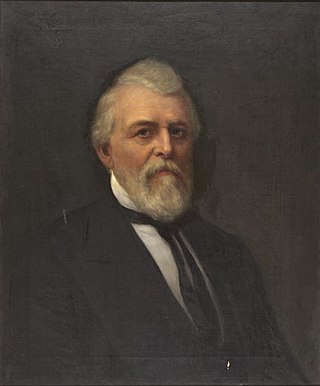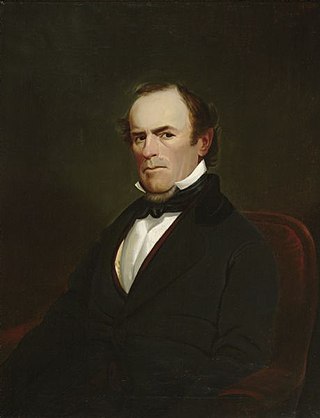Related Research Articles

The Territory of Iowa was an organized incorporated territory of the United States that existed from July 4, 1838, until December 28, 1846, when the southeastern portion of the territory was admitted to the Union as the state of Iowa. The remainder of the territory would have no organized territorial government until the Minnesota Territory was organized on March 3, 1849.

The Territory of Wisconsin was an organized and incorporated territory of the United States that existed from July 3, 1836, until May 29, 1848, when an eastern portion of the territory was admitted to the Union as the State of Wisconsin. Belmont was initially chosen as the capital of the territory. In 1837, the territorial legislature met in Burlington, just north of the Skunk River on the Mississippi, which became part of the Iowa Territory in 1838. In that year, 1838, the territorial capital of Wisconsin was moved to Madison.

The Iowa General Assembly is the legislative branch of the state government of Iowa. Like the federal United States Congress, the General Assembly is a bicameral body, composed of the upper house Iowa Senate and the lower Iowa House of Representatives respectively. The Senate consists of four year terms and the House consists of two year terms. The General Assembly convenes within the Iowa State Capitol in Des Moines since the capital was moved there in 1857. The assembly convenes annually on the second Monday in January.

First Capitol Historic Site is a free-admission historic museum located outside Belmont, Wisconsin, United States. The museum includes two of the buildings first used by legislators to meet in Wisconsin Territory. Currently owned and operated by the Wisconsin Historical Society, the site is listed on the National Register of Historic Places.
Isaac Leffler, sometimes spelled Lefler or Loeffler, was an American lawyer and Iowa pioneer who represented Virginia's 18th congressional district in the United States House of Representatives for one term in the 1820s. He also served in the legislatures of the Commonwealth of Virginia, as well as the Wisconsin and Iowa Territories. His younger brother, Shepherd Leffler, became one of Iowa's first congressmen after achieving statehood.

Moses McCure Strong was an American lawyer, politician, businessman, and Wisconsin pioneer. He was one of the framers of the Constitution of Wisconsin, a member of the territorial legislature, and United States Attorney for the Wisconsin Territory under President Martin Van Buren. After Wisconsin achieved statehood, he was Speaker of the Wisconsin State Assembly during the 3rd Wisconsin Legislature.

Levi Sterling was an American farmer, politician, and Wisconsin pioneer. He was one of the first American settlers at what is now Iowa County, Wisconsin. He served five years in the Wisconsin Legislature and—before Wisconsin achieved statehood—he served three years in the Wisconsin Territorial Assembly. During the American Civil War, he served as a Union Army cavalry officer.
Peter Hill Engle was an American lawyer, judge, and Iowa pioneer. He served as the first Speaker of the Legislative Assembly of the Wisconsin Territory after it was established, when it still contained the territory of the future states of Iowa and Minnesota. He later served as a judge of the St. Louis County, Missouri, Court of Common Pleas from 1841 until his death.

The 15th District of the Iowa Senate is located in central Iowa, and is currently composed of part of the city of Des Moines in Polk Counties.

The 1848 Wisconsin gubernatorial election was held on May 8, 1848. This was the election for the first Governor of Wisconsin, which became a U.S. state that year, as it was held concurrent with a public referendum to ratify the Constitution of Wisconsin.
The Minnesota Territorial Legislature was a bicameral legislative body created by the United States Congress in 1849 as the legislative branch of the government of the Territory of Minnesota. The upper chamber, the Council, and the lower chamber, the House of Representatives, first convened on September 3, 1849. The two chambers served as the territory's legislative body until Minnesota was admitted as a state on May 11, 1858, when the Territorial Legislature was replaced by the Minnesota Legislature.

In the 1838 Iowa Territory Council elections, electors selected councilors to serve in the first Iowa Territory Council. All 13 members of the Territory Council were elected. Councilors served one-year terms.

In the 1839 Iowa Territory Council elections, electors selected councilors to serve in the second Iowa Territory Council. All 13 members of the Territory Council were elected. Councilors served one-year terms.

In the 1845 Iowa Territory Council elections, electors selected councilors to serve in the eighth and final Iowa Territory Council before Iowa attained statehood in 1846. All 13 members of the Territory Council were elected. Councilors served until the organization of the Iowa General Assembly in 1846 as the legislative branch of the new state of Iowa.
The First Legislative Assembly of the Wisconsin Territory convened from October 25, 1836, to December 9, 1836, and from November 6, 1837, to January 20, 1838, in regular session. The Assembly also convened in special session from June 11, 1838, to June 25, 1838.
The Second Legislative Assembly of the Wisconsin Territory convened from November 26, 1838, to December 22, 1838, from January 21, 1839, to March 11, 1839, and from December 2, 1839, to January 13, 1840, in regular session. The Assembly also convened in an extra session from August 3, 1840, to August 14, 1840.
The Fourth Legislative Assembly of the Wisconsin Territory convened from December 5, 1842, to April 17, 1843, from December 4, 1843, to January 31, 1844, from January 6, 1845, to February 24, 1845, and from January 5, 1846, to February 3, 1846, in regular session.

The Fifth Legislative Assembly of the Wisconsin Territory convened from January 4, 1847, to February 11, 1847, and from February 7, 1848, to March 13, 1848, in regular session. The Assembly also convened in special session from October 18, 1847, to October 27, 1847, to organize a second constitutional convention after the failure to adopt the first Wisconsin Constitution.
Jeremiah Smith Jr. was an early settler in what is now Burlington, Iowa but was then in the Iowa District of the Michigan Territory. He worked as a merchant and land speculator, and later became a farmer and grower of fruit trees. He served as a representative for Des Moines County in the Council of the 1st Wisconsin Territorial Assembly, since at that time Iowa was part of Wisconsin Territory, from October 25, 1836, to June 25, 1838.
Joseph Bartlett Teas was an American lawyer and minister from Mt. Pleasant, Iowa. He served in the legislatures of three Territories of the United States without ever moving.
References
- ↑ Shambaugh, Benjamin F. The constitutions of Iowa: Published by the State historical society in commemoration of the one hundredth anniversary of the establishment of civil government in Iowa. Iowa City: State Historical Society of Iowa, 1934; pp. 79, 85
- ↑ Legislative Services Agency. Historical Tables of the Iowa Legislature: Regular and Extraordinary Sessions 1838 – 2021 Des Moines: The Iowa Legislature, 2021
- ↑ Legislative Services Agency. Historical Tables of the Iowa Legislature: Party Affiliations of Legislators 1838 – 2022 Des Moines: The Iowa Legislature, 2021